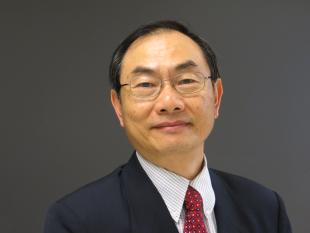L.-S. Fan is Distinguished University Professor and C. John Easton Professor in Engineering in the Department of Chemical and Biomolecular Engineering at The Ohio State University. He has been on the faculty of Chemical Engineering at Ohio State since 1978 and served as Department Chair from 1994 – 2003. Professor Fan received his B.S. (1970) from National Taiwan University, and his M.S. (1973) and Ph.D. (1975) from West Virginia University, all in Chemical Engineering. In addition, he earned an M.S. (1978) in Statistics from Kansas State University.
Professor Fan’s expertise is in particle science and technology, multiphase reaction engineering, and energy and environmental systems. He is an inventor of a number of industrially viable clean fossil conversion processes including OSCAR, CARBONOX, pH Swing, Calcium Looping, Syngas Looping, Coal-Direct Chemical Looping and SULGEN Processes. These processes control sulfur, nitrogen oxide and carbon dioxide emissions and/or convert carbonaceous fuels to hydrogen, chemicals or liquid fuels. He also invented the electrical capacitance volume tomography for 3-dimensional, real time multiphase flow imaging that is currently being used in academia and industry worldwide. Professor Fan is the Editor-in-Chief of Powder Technology. He has also served as a consulting editor of ten other journals and book series, including the AIChE Journal and the International Journal of Multiphase Flow, and as a consultant for 20 major corporations. He has authored or co-authored five books, 420 journal papers, and 55 patents.
Professor Fan has received a number of awards in recognition of his research, teaching and services including the ACS Murphree Award in Industrial Engineering and Chemistry, the AIChE Alpha Chi Sigma Award in Chemical Engineering Research, the Wilhelm Award in Chemical Reaction Engineering, and the 67th Institute Lectureship Awards, the ASEE Dow Lectureship, the Council for Chemical Research Pruitt Award, the R&D 100 Award, the International Fluidization Achievement Award, the International Pitt Award for Innovation in Coal Conversion, and The Ohio State University MacQuigg Award for Outstanding Teaching. He is a Fellow of the American Association for the Advancement of Science (AAAS) and a member of the U. S. National Academy of Engineering, the Chinese Academy of Engineering, the Australia Academy of Technology Science and Engineering (ATSE), the Mexican Academy of Sciences, and the Academia Sinica. Professor Fan was named in 2008 as one of the “One Hundred Engineers of the Modern Era” by the AIChE.

